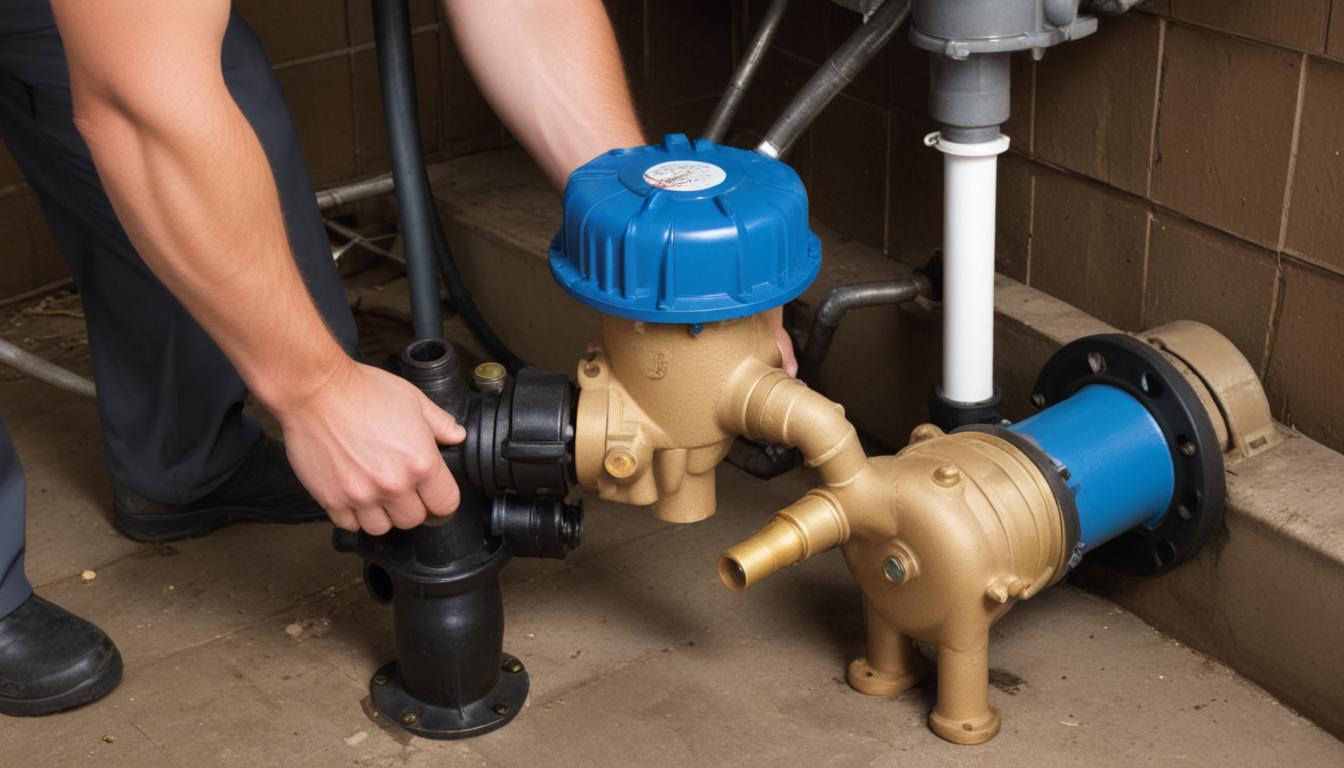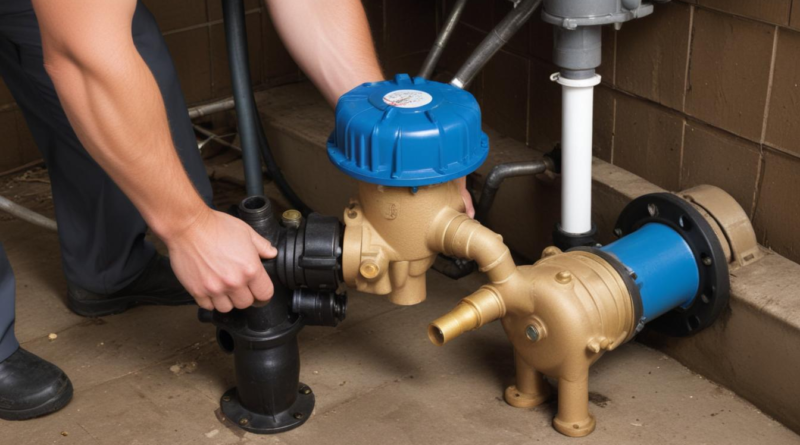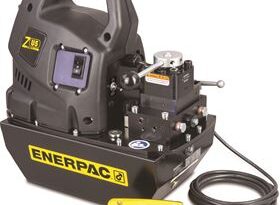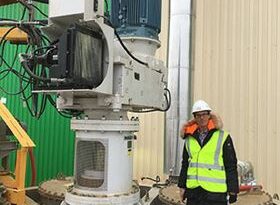how to troubleshoot pump pressure issues
Identifying pressure issues is a crucial first step in troubleshooting pump pressure problems. Accurate detection allows for timely intervention and effective solutions to maintain optimal system performance. The following approaches can help in recognizing and assessing pressure-related concerns:
- Monitor Pressure Gauges: Regularly check the pressure gauges to ensure readings are within the manufacturer’s specified range. Sudden drops or spikes can indicate underlying issues.
- Assess System Performance: Observe the overall performance of the system. Signs such as reduced flow rates, inconsistent pressure, or delayed responses may signal pressure discrepancies.
- Inspect for Unusual Noises: Listen for abnormal sounds like whining, humming, or knocking from the pump, which can be symptomatic of pressure irregularities.
- Evaluate Energy Consumption: Increased energy usage without a corresponding increase in output can be a sign of pressure problems affecting pump efficiency.
- Check for Visual Indicators: Look for signs of leaks, vibrations, or overheating around the pump area, as these can be associated with pressure issues.
To systematically identify pressure issues, consider the following table that outlines common symptoms and their potential causes:
| Symptom | Possible Cause | Potential Impact |
|---|---|---|
| Low Pump Pressure |
|
Reduced system efficiency and inadequate fluid delivery |
| Fluctuating Pressure |
|
Unstable operation and potential equipment stress |
| High Pump Pressure |
|
Risk of system damage and increased wear on components |
| Inconsistent Pressure Readings |
|
Difficulty in accurate monitoring and control |
By systematically monitoring these aspects, technicians can effectively pinpoint pressure issues and implement appropriate solutions to ensure the pump operates within desired parameters.
inspecting the power supply
Ensuring a stable and reliable power supply is fundamental to maintaining optimal pump performance. Fluctuations or interruptions in power can significantly impact pump pressure, leading to inefficiencies and potential system failures. When addressing pump pressure issues, it is essential to methodically examine the power supply using the following steps:
- Verify Voltage Levels: Utilize a multimeter to measure the voltage being delivered to the pump. Confirm that the voltage aligns with the manufacturer’s specifications. Both under-voltage and over-voltage conditions can adversely affect pump performance and pressure consistency.
- Inspect Circuit Breakers and Fuses: Check that all circuit breakers are in the correct position and that fuses are intact. Tripped breakers or blown fuses can disrupt the power flow, leading to inadequate pump operation.
- Examine Power Cables and Connections: Look for signs of wear, corrosion, or damage in power cables and connections. Faulty wiring can cause intermittent power supply, resulting in fluctuating pump pressure and decreased system reliability.
- Check for Proper Grounding: Ensure that the pump is properly grounded to prevent electrical interference and enhance safety. Poor grounding can lead to electrical noise, which may interfere with pump controls and pressure regulation.
- Assess Power Quality: Analyze the overall power quality for issues such as harmonic distortion, surges, or sags. Power quality problems can disrupt pump operation and lead to inconsistent pressure levels. Tools like power quality analyzers can provide detailed insights.
The following table highlights common power supply problems, their potential causes, and recommended solutions:
| Problem | Possible Cause | Solution |
|---|---|---|
| Low Voltage |
|
Upgrade the power supply or reduce cable length to maintain appropriate voltage levels. |
| Power Surges |
|
Install surge protectors and ensure proper grounding to mitigate the effects of power surges. |
| Intermittent Power |
|
Repair or replace damaged cables and secure all electrical connections to ensure a consistent power supply. |
| Electrical Noise |
|
Enhance grounding techniques and use shielded cables to reduce electrical noise and interference. |
By meticulously inspecting each aspect of the power supply, technicians can identify and rectify electrical issues that may be compromising pump pressure. Implementing these solutions not only resolves current pressure problems but also helps in preventing future disruptions, ensuring the pump operates efficiently and reliably within the desired parameters.
examining pump components
A thorough examination of the pump’s internal components is essential for diagnosing and resolving pressure issues. By systematically assessing each part, technicians can identify wear, damage, or misalignment that may be contributing to inadequate pump performance. The following aspects should be carefully inspected:
- Impellers: Inspect the impellers for signs of wear, corrosion, or blockage. Damaged impellers can hinder fluid movement, reducing pump pressure and efficiency.
- Shaft Seals: Check the integrity of shaft seals to prevent leaks. Worn or damaged seals can lead to loss of pressure and potential contamination of the pumped fluid.
- Bearings: Examine the bearings for excessive wear, lubrication issues, or overheating. Faulty bearings can cause misalignment, vibration, and ultimately reduce pump performance.
- Valves: Ensure that all valves are functioning correctly and are free from obstructions. Faulty valves can restrict flow, causing pressure drops and inconsistent performance.
- Motor: Assess the motor for any signs of electrical issues, overheating, or mechanical failures. A malfunctioning motor can directly impact pump pressure by affecting the rotational speed and power output.
- Casing: Inspect the pump casing for cracks, corrosion, or deformities. Damage to the casing can lead to leaks and inefficient fluid handling, negatively affecting pump pressure.
To provide a clear overview of common component-related problems and their solutions, refer to the table below:
| Component | Common Issues | Recommended Solutions |
|---|---|---|
| Impellers |
|
Replace or repair damaged impellers, clean any blockages, and apply protective coatings to prevent corrosion. |
| Shaft Seals |
|
Replace faulty seals, ensure proper installation techniques, and use high-quality seal materials suitable for the operating environment. |
| Bearings |
|
Regularly lubricate bearings, replace worn bearings, and ensure proper alignment to prevent overheating and reduce friction. |
| Valves |
|
Clean and repair valves, replace faulty components, and ensure valves are correctly adjusted to maintain optimal flow and pressure. |
| Motor |
|
Inspect electrical connections, cool the motor adequately, perform regular maintenance, and replace or repair defective motor parts. |
| Casing |
|
Repair or replace damaged casing sections, apply anti-corrosive treatments, and ensure proper installation to maintain structural integrity. |
Additionally, consider the following best practices when examining pump components:
- Regular Maintenance: Implement a routine maintenance schedule to inspect and service pump components, reducing the likelihood of unexpected failures.
- Documentation: Keep detailed records of inspections, maintenance activities, and any component replacements to track the pump’s performance over time.
- Training: Ensure that personnel are adequately trained in pump operation and troubleshooting techniques to effectively identify and address component-related issues.
- Use Quality Parts: Utilize high-quality replacement parts that meet or exceed manufacturer specifications to ensure longevity and reliability of the pump system.
By meticulously examining each component, technicians can uncover the root causes of pump pressure issues and implement effective solutions. This comprehensive approach not only resolves current problems but also enhances the overall durability and efficiency of the pumping system.
verifying pressure settings
 Verifying pressure settings is essential to ensure that the pump operates within the optimal parameters defined by the manufacturer. Incorrect pressure settings can lead to inefficient pump performance, increased energy consumption, and potential damage to the system. The following steps outline the process for effectively verifying and adjusting pressure settings:
Verifying pressure settings is essential to ensure that the pump operates within the optimal parameters defined by the manufacturer. Incorrect pressure settings can lead to inefficient pump performance, increased energy consumption, and potential damage to the system. The following steps outline the process for effectively verifying and adjusting pressure settings:
- Review Manufacturer’s Specifications: Begin by consulting the pump’s manual to understand the recommended pressure ranges. Adhering to these specifications ensures that the pump functions correctly and prolongs its lifespan.
- Calibrate Pressure Gauges: Ensure that all pressure gauges are accurately calibrated. Inaccurate gauges can provide misleading information, making it difficult to assess whether the system is operating within the desired parameters.
- Inspect Pressure Regulators: Examine the pressure regulators to confirm they are set according to the system requirements. Adjustments may be necessary if deviations are detected.
- Check Pressure Switches: Verify that pressure switches are set to activate the pump at the correct pressure thresholds. Incorrect settings can cause the pump to cycle improperly, leading to pressure inconsistencies.
- Test System Response: After adjustments, monitor the system’s response to ensure that pressure levels stabilize within the acceptable range. This step verifies that the settings have been correctly applied and that the pump is functioning efficiently.
A table outlining common pressure settings issues and their corresponding solutions can aid in the troubleshooting process:
| Pressure Setting Issue | Possible Cause | Corrective Action |
|---|---|---|
| Pressure Too Low |
|
|
| Pressure Too High |
|
|
| Inconsistent Pressure |
|
|
Additionally, consider the following best practices when verifying pressure settings:
- Regular Monitoring: Continuously monitor pressure levels to detect any deviations promptly. This practice helps in identifying issues before they escalate into significant problems.
- Use Reliable Instruments: Employ high-quality and reliable pressure measuring instruments to ensure accurate readings and effective troubleshooting.
- Document Settings: Keep detailed records of the pressure settings and any adjustments made. Documentation aids in tracking system performance and diagnosing recurring issues.
- Train Personnel: Ensure that staff are knowledgeable about the importance of correct pressure settings and are trained to perform necessary adjustments and troubleshooting steps effectively.
Effective verification and adjustment of pressure settings not only address current pump pressure issues but also enhance the overall reliability and efficiency of the pumping system.
checking for leaks and blockages
Inspecting for leaks and blockages is vital to maintaining consistent pump pressure and overall system efficiency. Undetected leaks can lead to significant fluid loss and diminished pressure, while blockages may restrict flow, causing the pump to work harder and potentially leading to mechanical failures. The following steps can help in identifying and addressing these issues effectively:
- Visual Inspection: Thoroughly examine all visible piping, joints, and connections for signs of leaks, such as dripping fluids, corrosion, or discoloration. Look for wet spots or puddles around the pump area.
- Pressure Testing: Conduct pressure tests to identify leaks that are not immediately visible. Compare pressure readings over time to detect any unexpected drops that may indicate a leak.
- Flow Analysis: Measure the flow rate within the system. A lower than expected flow rate can signify a blockage or a leak affecting the pump’s performance.
- Leak Detection Tools: Utilize specialized equipment like ultrasonic leak detectors or dye penetrants to locate hidden leaks that might not be detectable through visual inspection alone.
- Pipe Cleaning: Regularly clean pipes and fittings to prevent the accumulation of debris that can cause blockages. Use appropriate cleaning agents that do not damage the pipe materials.
- Valve and Fitting Inspection: Ensure that all valves and fittings are operating correctly and are free from obstructions. Faulty valves can contribute to both leaks and blockages.
To further aid in troubleshooting leaks and blockages, consider the following table outlining common issues, their potential causes, and recommended solutions:
| Issue | Possible Cause | Solution |
|---|---|---|
| Fluid Leaks |
|
|
| Restricted Flow |
|
|
| Pressure Drops |
|
|
| Unusual Pump Vibrations |
|
|
Implementing the following best practices can significantly enhance the detection and prevention of leaks and blockages:
- Regular Inspections: Schedule routine inspections of all system components to identify and address leaks or blockages early before they escalate into major issues.
- Preventative Maintenance: Maintain all seals, gaskets, and valves to prevent deterioration that can lead to leaks or obstructions. Regularly replace worn parts as part of a maintenance schedule.
- Use of Quality Materials: Utilize high-quality, corrosion-resistant materials for pipes and fittings to minimize the risk of leaks and blockages caused by material degradation.
- Implement Monitoring Systems: Install monitoring systems that can detect leaks or pressure changes in real-time, enabling prompt troubleshooting and minimizing downtime.
- Training and Awareness: Ensure that personnel are trained to recognize the signs of leaks and blockages and are knowledgeable about the appropriate steps to take when such issues are detected.
By diligently checking for leaks and blockages, technicians can maintain optimal pump pressure, enhance system reliability, and prevent costly downtimes. Implementing these solutions not only addresses existing issues but also fortifies the system against future disruptions, ensuring sustained performance and efficiency.




